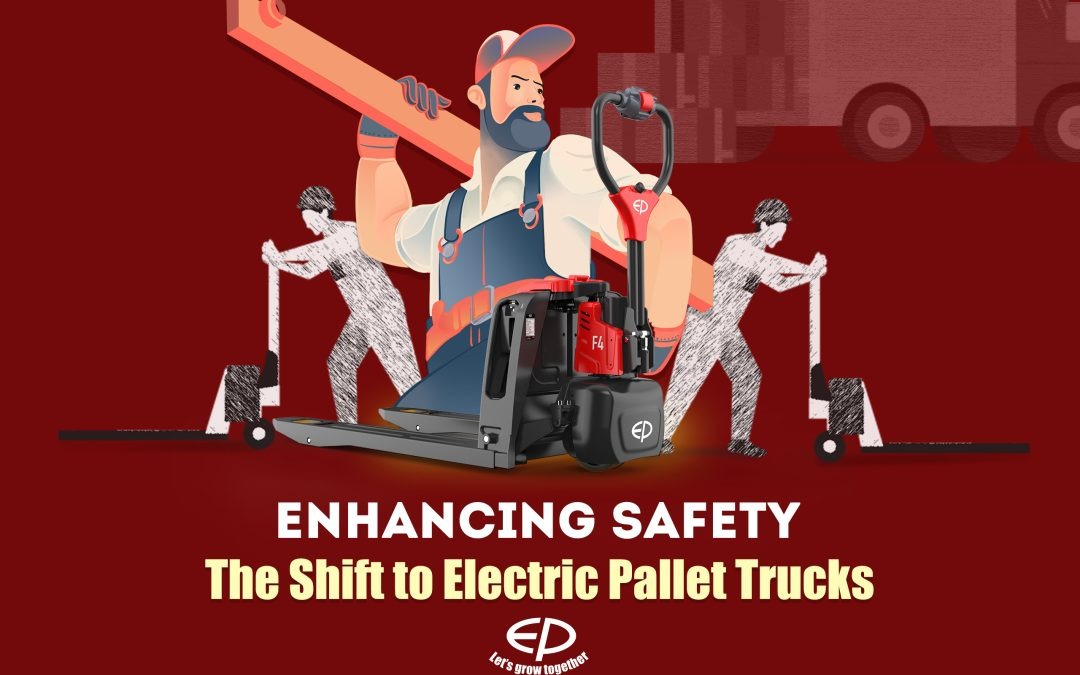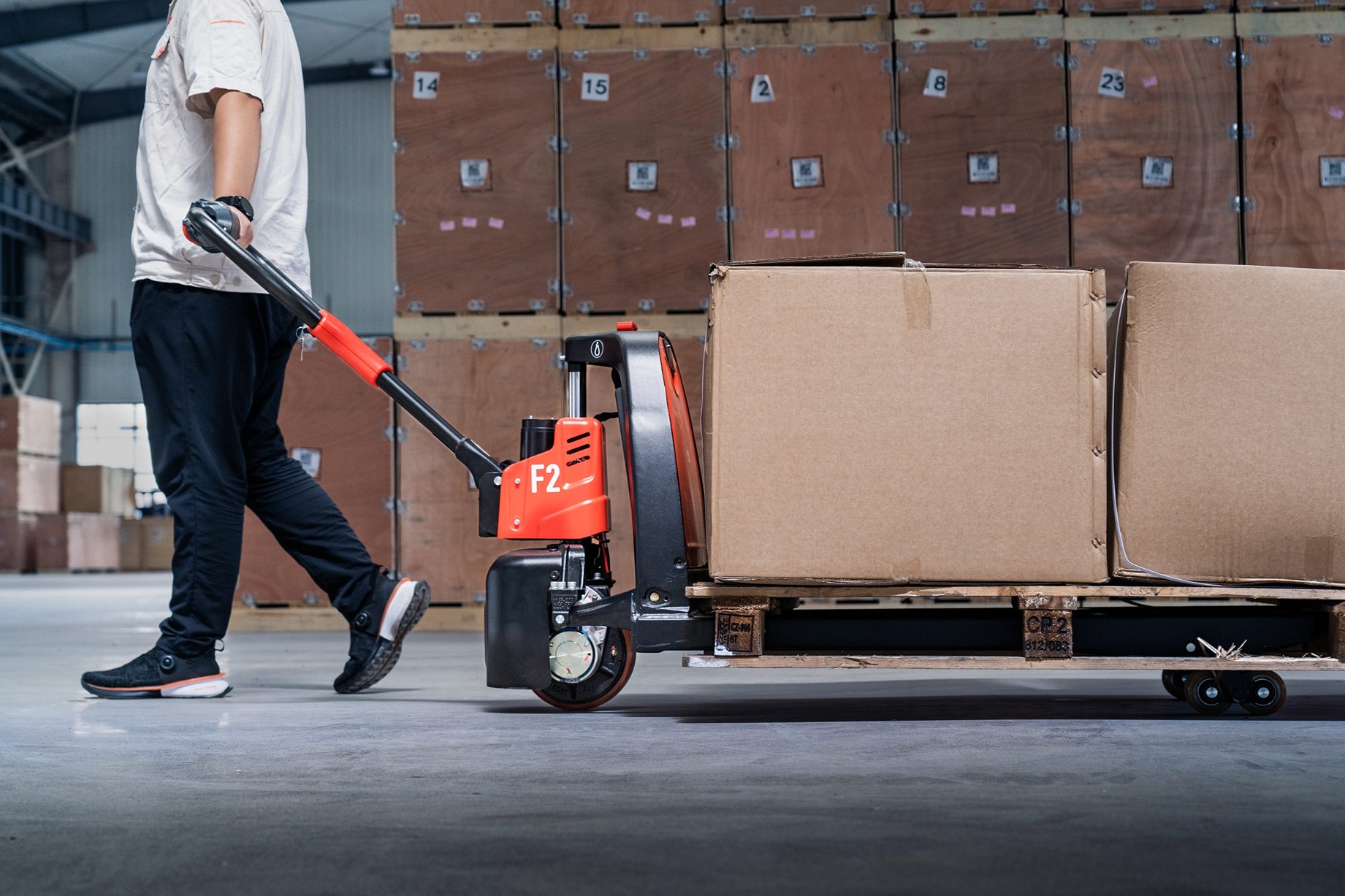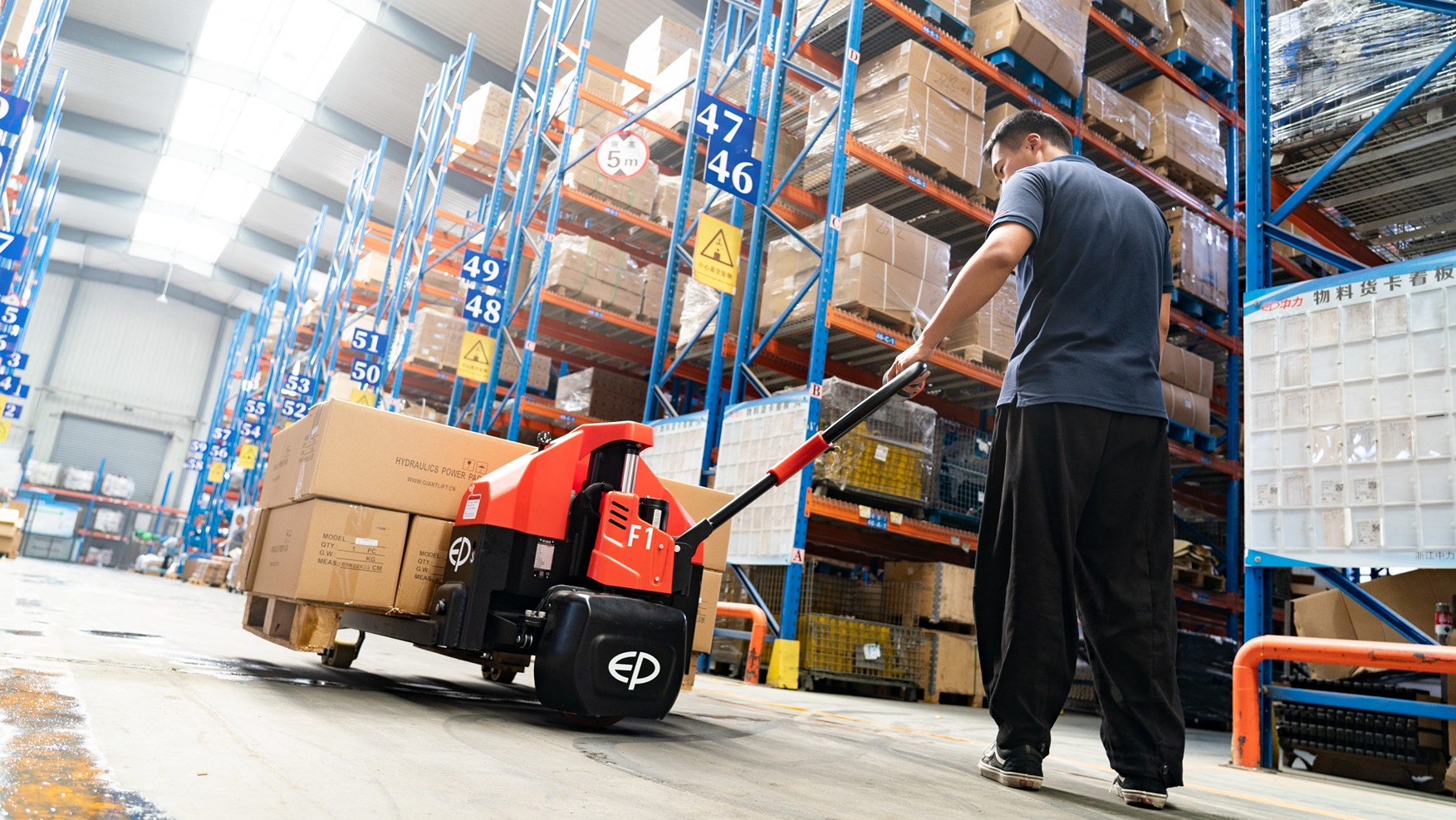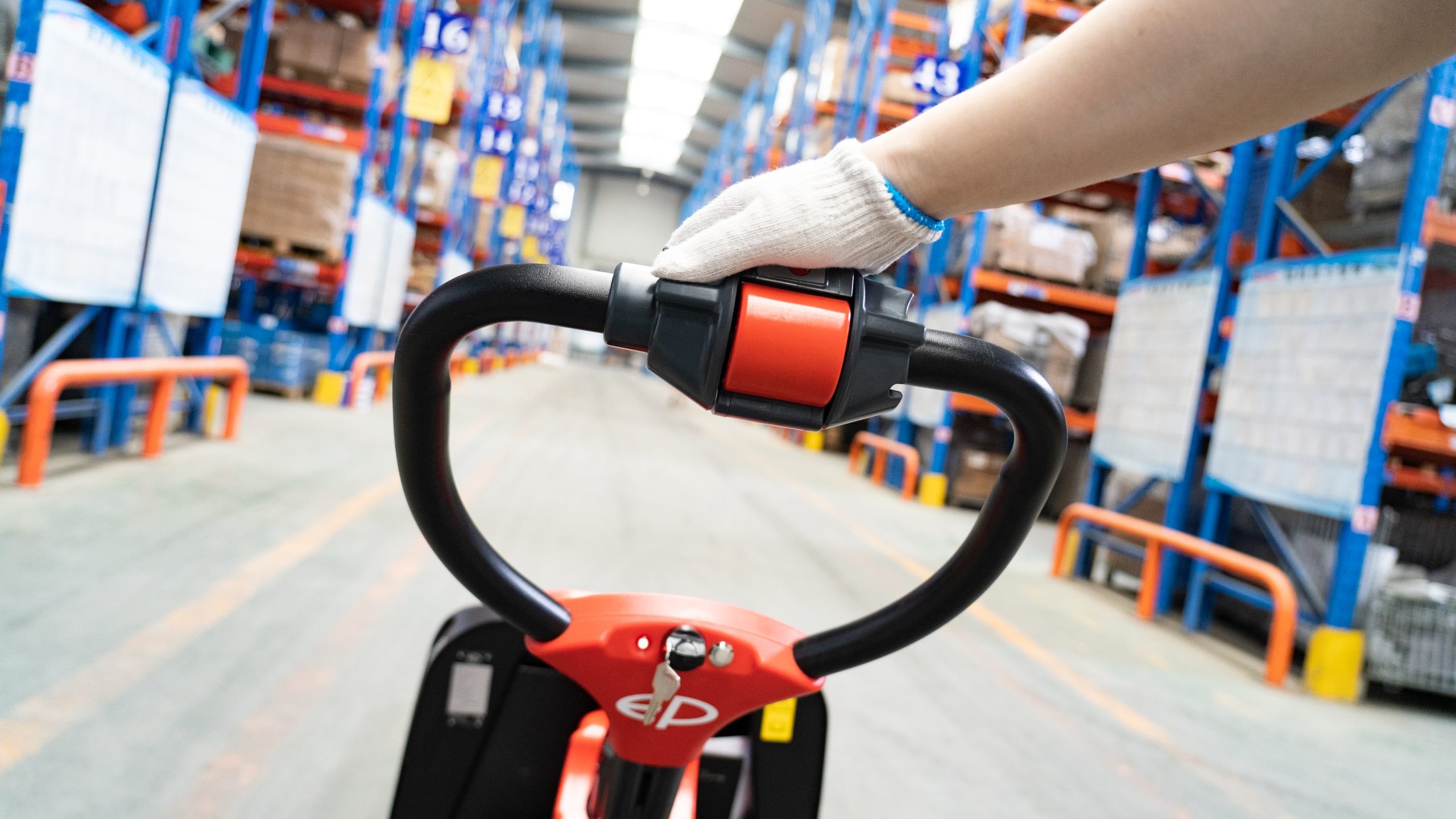In the past few years, many workplaces have been transitioning to electric pallet trucks in order to create a safer environment. Electric pallet trucks are replacing their traditional manual counterparts due to several compelling reasons. This article looks into the benefits of electric pallet trucks compared to manual ones, and how the transition can help to improve safety in different work settings.
What’s a pallet truck? How do manual and electric differ from one another?
Pallet trucks or pallet jacks are material handling equipment used to lift and transport palletized loads. The objective is to facilitate the transportation of goods within warehouses, last-mile delivery, distribution centers and other industrial settings.
The main difference between a manual pallet truck and an electric pallet truck is in how they are operated and powered:
- A manual pallet truck doesn’t require an external power source, as human power operates it. It consists of a steel frame with a set of forks that can be inserted under a pallet. The forks are raised or lowered using a hydraulic pump, which is connected to the handle of the pallet truck by a lever. The operator pumps the lever to lift the load off the ground and manually pushes or pulls the pallet truck to transport the load.
- An electric pallet truck is driven by an electric motor and the power source is a rechargeable battery. The design is similar to one of a manual pallet truck, with a steel frame and forks for lifting pallets. However, instead of operating levers manually, the operator controls movement of the electric pallet truck through butterfly buttons located on the tiller head. Also, the lifting of the loads is done electrically through an electro-hydraulic motor, requiring no physical strength from the operator.
What are the advantages of electric pallet trucks?
1. Improved Ergonomics
One of the main advantages of electric pallet trucks is improved ergonomics, which greatly reduces the risk of injury at work.
Manual pallet trucks require physical effort by the operator to move and lift heavy loads. These can lead to strained muscles, sprains, and other musculoskeletal disorders. Electric pallet trucks, on the other hand, are equipped with a power system that eliminates the need for manual labor.
This reduces the burden on the operator. As a result, they are able to transport goods more safely and efficiently. This also minimizes the risk of injuries.
2. Improved Maneuverability
Electric pallet trucks have improved maneuverability compared to manual pallet trucks. They are designed with features such as variable speed control and smooth acceleration for easy handling and control in tight spaces.
This improved maneuverability allows operators to navigate congested areas, narrow aisles, and other challenging environments with greater precision and safety. Moreover, many electric pallet trucks are equipped with advanced steering systems and intuitive controls that further enhance the driver’s ability to maneuver safely.
For example, EP’s electric pallet trucks are equipped with a turtle button. This button makes the pallet truck move at a reduced speed with the tiller in vertical position. This enhances safety in case of operation in narrow spaces.
3. Improved Load Handling
Electric pallet trucks are designed to move heavier loads more easily and efficiently. Unlike manual pallet trucks that rely on physical strength, electric models use electric motors to lift and move heavy pallets.
This increased lifting capacity allows operators to move larger loads without strain or injury. In addition, electric pallet trucks often incorporate features such as load sensors and anti-tilt devices, which further improve load stability and reduce the risk of accidents during handling.
4. Advanced Safety Features
Electric pallet trucks are equipped with various advanced safety features that go beyond manual ones. These features include emergency stop buttons, automatic braking systems, and improved visibility with lights and alarms.
Electric pallet trucks are often equipped with technologies such as proximity sensors and obstacle detection systems. These feature help to prevent collisions with objects and pedestrians. These safety improvements minimize the risk of workplace accidents and injuries and create a safer environment for operators and other employees.
EP electric pallet trucks standard safety features
EP’s commitment to safety and prevention of risk of injuries is completely reflected in the truck’s design. Every EP electric pallet truck has standard safety features, which are the following:
Tiller in working position
To operate the electric pallet truck, the tiller must be in a working position. This means that the tiller mustn’t be in vertical position nor completely lowered, but in an intermediate position, slightly inclined. For this reason, EP’s electric pallet trucks are equipped with a sensor that recognizes the tiller position.
By positioning the tiller in the designated working position, the electric pallet truck recognizes that the operator is ready to commence work. This feature serves as a crucial safety measure, effectively preventing any unintended movements of the pallet truck during operation.
Permanent magnetic brakes
The electric pallet truck is not only equipped with driving motors but also with reliable brakes. Such brakes are designed to be automatically engaged in all conditions, making sure that the machine will remain stationary also if standing on a slope or in case of low battery.
To move the pallet truck, the operator must first bring the tiller in the working position and apply pressure on the butterfly button. This releases the brakes and allows the machine to move in the direction selected by the operator.
Belly button
In case of operation in narrow spaces, if, for example, the operator is pulling the truck towards a wall, the belly button prevents the operator from being smashed between the machine and the wall. Located on the top of the tiller head, the belly button, when pushed, will automatically stop and drive back, avoiding the risk of injury of the operator.
Choosing the right electric pallet truck for your application
Do you want to switch to electric? Are you unsure of how to select the right pallet truck for your business? At EP, we recognize that every customer is unique. Therefore, we offer a variety of products to fulfill each customer’s needs.
The EP F Series offers an application-oriented design. This helps users select the right chassis for their particular needs.
The F series features the F platform. This simplifies the truck configuration process. Buyers can then choose from four different chassis, based on their application. Let’s see in detail the specific application of each pallet truck:
F1
A durable chassis with one lasting battery – F1 is a reliable partner to handle heavy duties in rugged industrial environments, such as manufacturing facilities and construction sites.
It features a newly developed tiller with a turtle speed switch and a mechanical spring rebound structure, which provides maneuverability and labor saving for daily operation.
F2
F2 is an easy tool for usage in a retail environment, such as supermarkets and malls. Its small and sleek truck body makes it perfect for applications on shop floors and around shelves.
With the 24V/20Ah Li-ion battery, this truck is easy and flexible to charge based on your needs thanks to opportunity charging.
F3
F3 is equipped with a strong chassis and makes it a reliable helper to transport goods in logistics centers and warehouses. This truck features a plug&play Li-ion battery for an easy swap to meet various work shift settings.
F4
The F4 offers the most cost-effective handling solution with maximum flexibility due to the configuration. Operators have options to choose one battery plus a portable storage container or two batteries to meet multiple work settings, from light to heavy duties, from indoors to outdoors.





